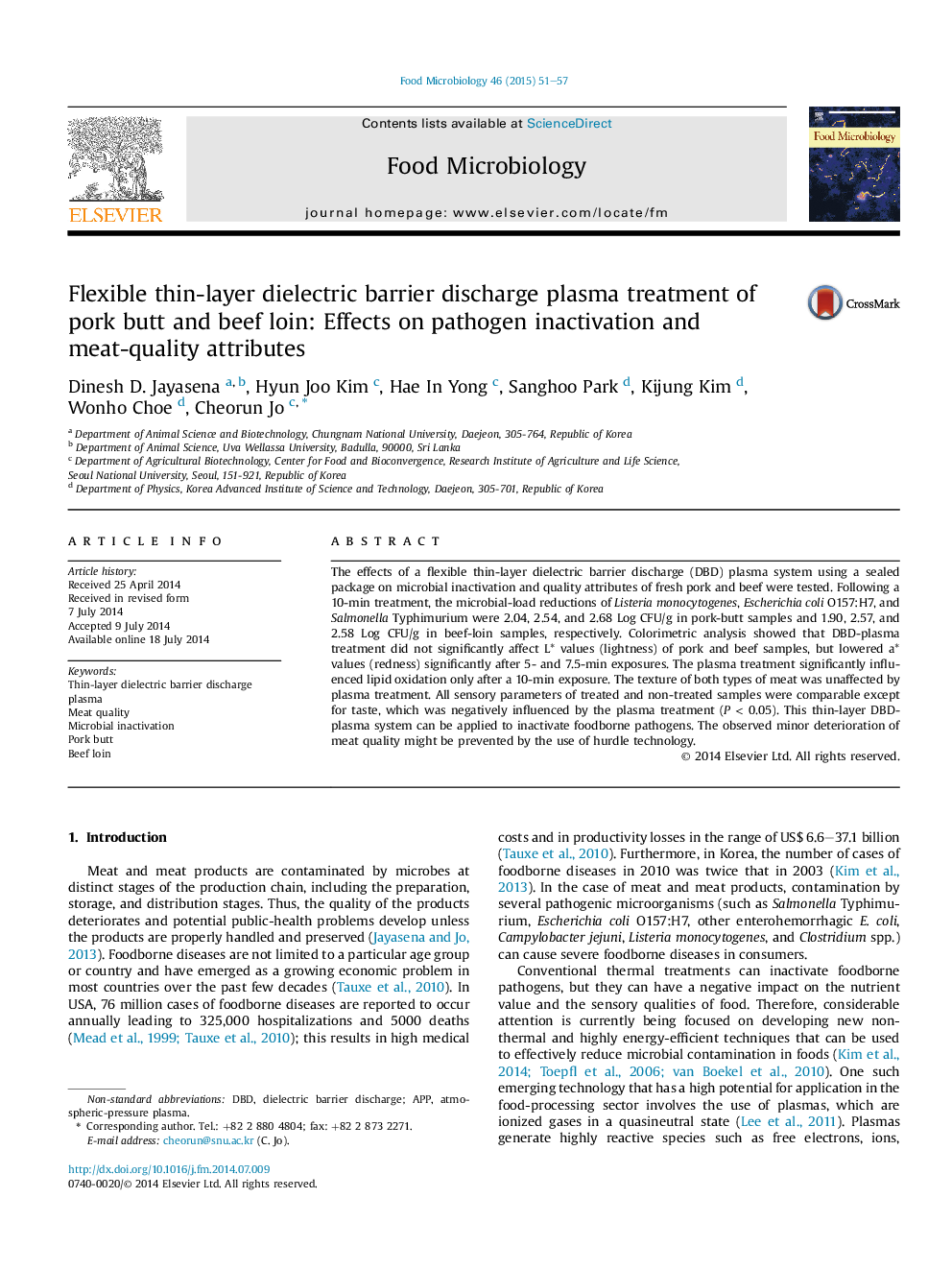| Article ID | Journal | Published Year | Pages | File Type |
|---|---|---|---|---|
| 6288519 | Food Microbiology | 2015 | 7 Pages |
â¢A flexible thin layer dielectric barrier discharge (DBD) plasma system was setup.â¢The 10-min plasma treatment reduced the pathogen counts by at least 1.90 Log CFU/g.â¢Modification of DBD plasma system to reduce changes in meat quality is convenient.
The effects of a flexible thin-layer dielectric barrier discharge (DBD) plasma system using a sealed package on microbial inactivation and quality attributes of fresh pork and beef were tested. Following a 10-min treatment, the microbial-load reductions of Listeria monocytogenes, Escherichia coli O157:H7, and Salmonella Typhimurium were 2.04, 2.54, and 2.68 Log CFU/g in pork-butt samples and 1.90, 2.57, and 2.58 Log CFU/g in beef-loin samples, respectively. Colorimetric analysis showed that DBD-plasma treatment did not significantly affect L* values (lightness) of pork and beef samples, but lowered a* values (redness) significantly after 5- and 7.5-min exposures. The plasma treatment significantly influenced lipid oxidation only after a 10-min exposure. The texture of both types of meat was unaffected by plasma treatment. All sensory parameters of treated and non-treated samples were comparable except for taste, which was negatively influenced by the plasma treatment (PÂ <Â 0.05). This thin-layer DBD-plasma system can be applied to inactivate foodborne pathogens. The observed minor deterioration of meat quality might be prevented by the use of hurdle technology.
